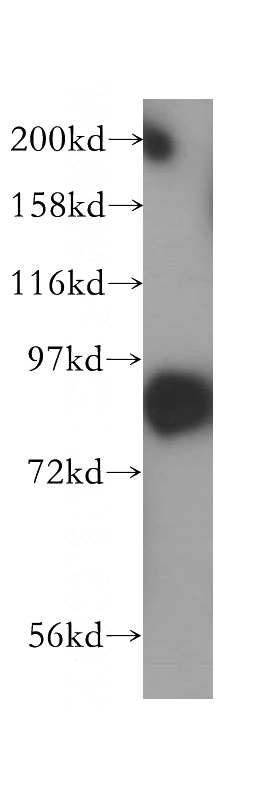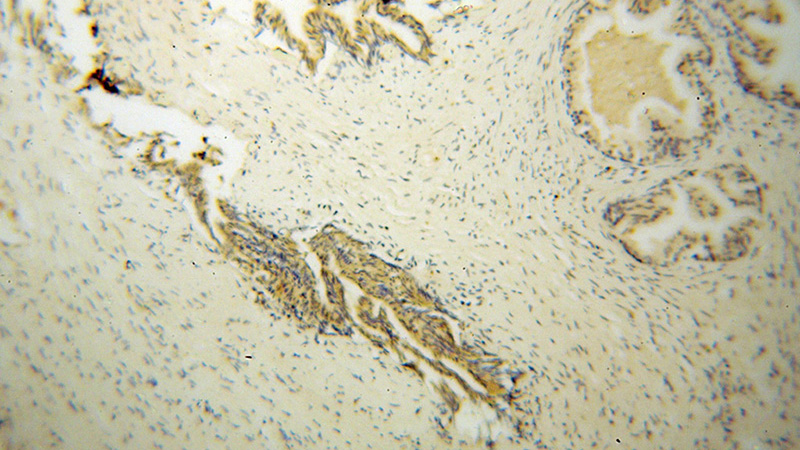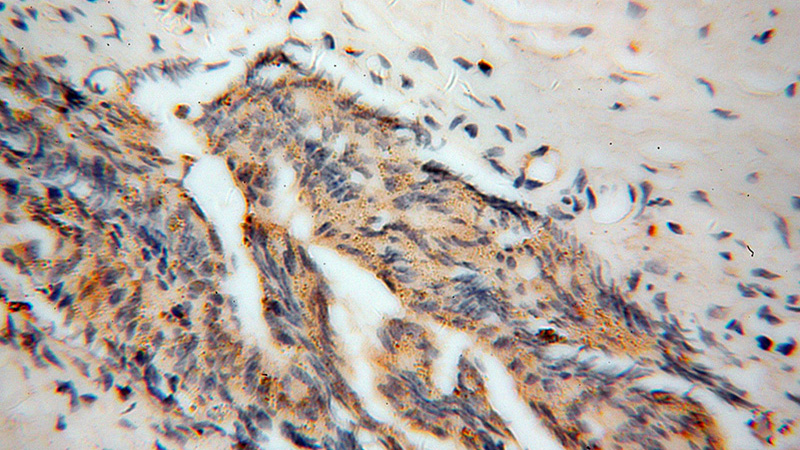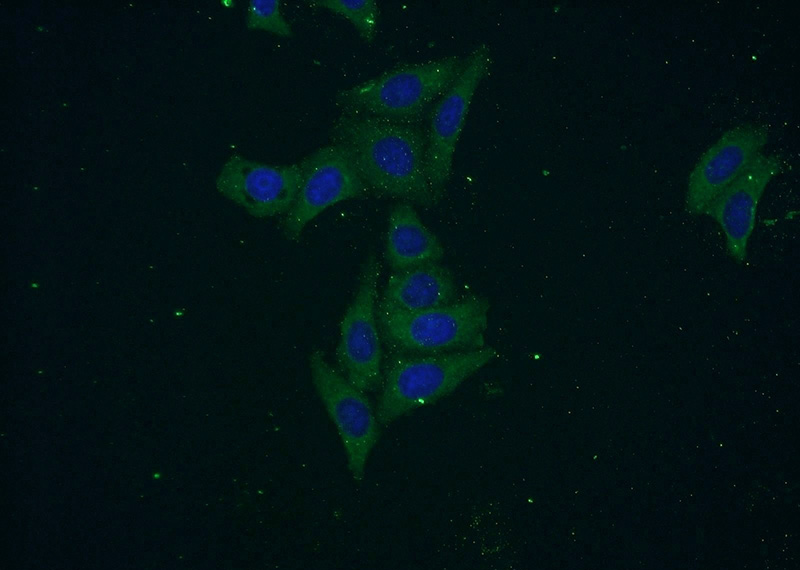-
Product Name
SEC6 antibody
- Documents
-
Description
SEC6 Rabbit Polyclonal antibody. Positive IF detected in HepG2 cells. Positive IHC detected in human gliomas tissue. Positive WB detected in human brain tissue, COLO 320 cells, HeLa cells, HepG2 cells. Observed molecular weight by Western-blot: 86 kDa
-
Tested applications
ELISA, WB, IHC, IF
-
Species reactivity
Human,Mouse,Rat; other species not tested.
-
Alternative names
EXOC3 antibody; exOCyst complex component 3 antibody; ExOCyst complex component Sec6 antibody; SEC6 antibody; SEC6L1 antibody; Sec6p antibody
-
Isotype
Rabbit IgG
-
Preparation
This antibody was obtained by immunization of SEC6 recombinant protein (Accession Number: XM_017009003). Purification method: Antigen affinity purified.
-
Clonality
Polyclonal
-
Formulation
PBS with 0.02% sodium azide and 50% glycerol pH 7.3.
-
Storage instructions
Store at -20℃. DO NOT ALIQUOT
-
Applications
Recommended Dilution:
WB: 1:500-1:5000
IHC: 1:20-1:200
IF: 1:20-1:200
-
Validations

human brain tissue were subjected to SDS PAGE followed by western blot with Catalog No:115083(SEC6 antibody) at dilution of 1:86

Immunohistochemical of paraffin-embedded human gliomas using Catalog No:115083(SEC6 antibody) at dilution of 1:100 (under 10x lens)

Immunohistochemical of paraffin-embedded human gliomas using Catalog No:115083(SEC6 antibody) at dilution of 1:100 (under 40x lens)

Immunofluorescent analysis of HepG2 cells using Catalog No:115083(SEC6 Antibody) at dilution of 1:50 and Alexa Fluor 488-congugated AffiniPure Goat Anti-Rabbit IgG(H+L)
-
Background
Exoc3 (Sec6) is a component of the exocyst (Sec6/8) complex involved in vesicle trafficking at neural synapses and vesicle targeting in polarized epithelial cells. Though best characterized in yeast, the component proteins and functions of exocyst complex have been demonstrated to be highly conserved in higher eukaryotes. This complex is composed of eight proteins (Sec3, Sec5, Sec6, Sec8, Sec10, and Sec15, Exo70 and Exo84), with molecular weights ranging from 70 to 144 kDa.
-
References
- Takeuchi H, Furuta N, Morisaki I, Amano A. Exit of intracellular Porphyromonas gingivalis from gingival epithelial cells is mediated by endocytic recycling pathway. Cellular microbiology. 13(5):677-91. 2011.
- Takeuchi H, Takada A, Kuboniwa M, Amano A. Intracellular periodontal pathogen exploits recycling pathway to exit from infected cells. Cellular microbiology. 2015.
- Youssef G, Gerner L, Naeem AS. Rab3Gap1 mediates exocytosis of Claudin-1 and tight junction formation during epidermal barrier acquisition. Developmental biology. 380(2):274-85. 2013.
Related Products / Services
Please note: All products are "FOR RESEARCH USE ONLY AND ARE NOT INTENDED FOR DIAGNOSTIC OR THERAPEUTIC USE"
